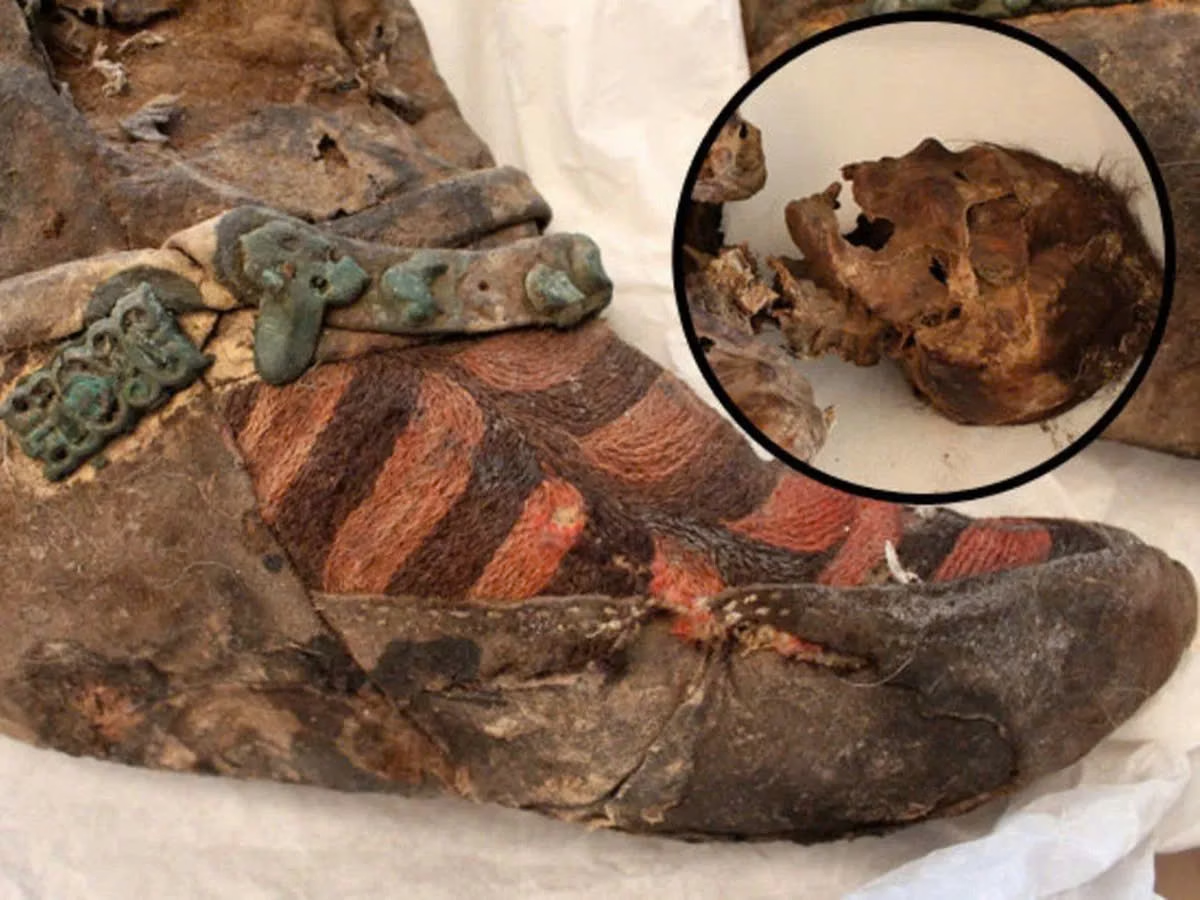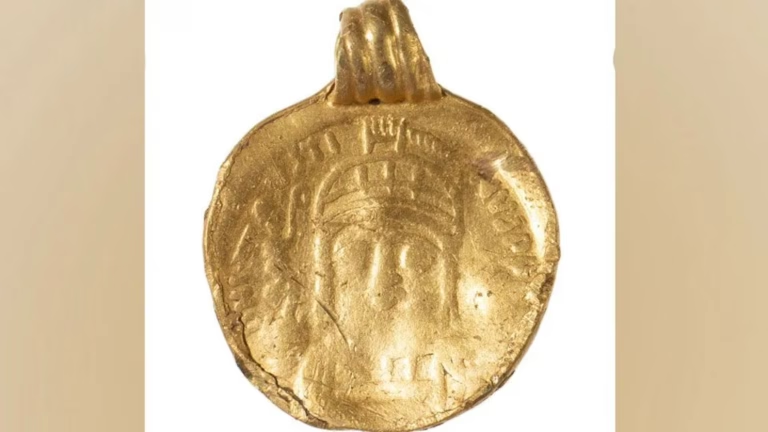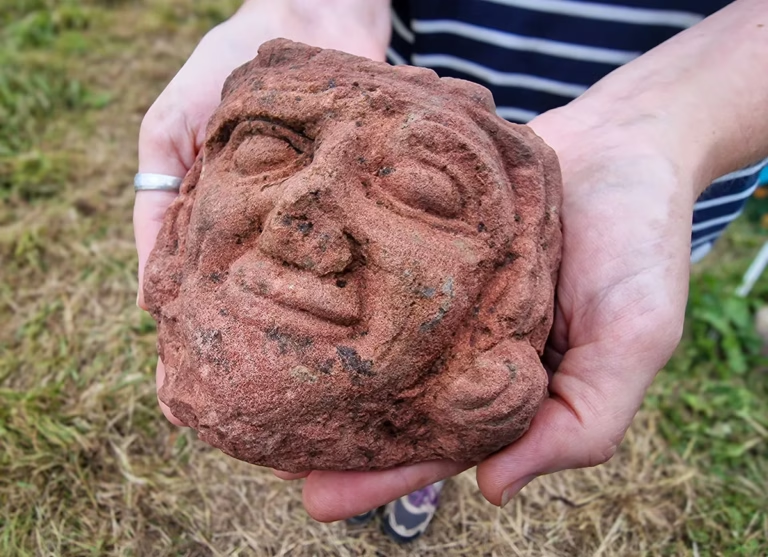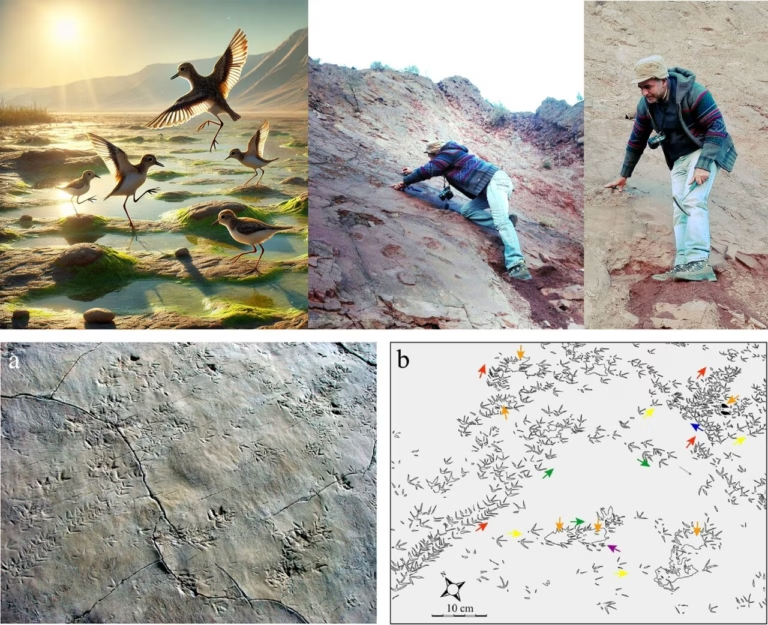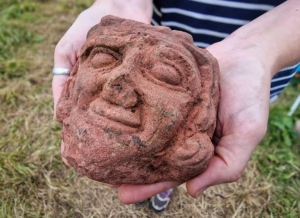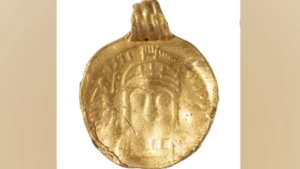A newly uncovered 1,100-year-old female mummy in the remote Altai Mountains is offering archaeologists a rare and vivid glimpse into the daily life, social structure, and spiritual beliefs of ancient nomadic communities.
Discovered at high altitude in Siberia, the mummy was found in an astonishing state of preservation, thanks to the region’s naturally cold and arid environment. Estimated to be between 30 and 40 years old at the time of her death, the woman was buried with a rich assortment of personal belongings—many of which are remarkably intact.
An Exceptional Burial: Status, Style, and Spirituality
Among the most captivating finds are her ornate leather boots, which display advanced craftsmanship and artistic detail. The design of the footwear not only reveals a high degree of technical skill but also hints at the extensive trade networks and material knowledge of her time.
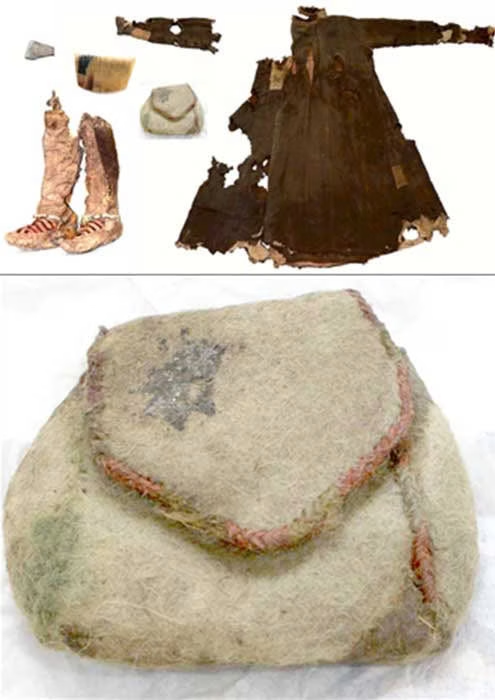
The burial site also contained a carefully carved comb, a utility knife, and a bag whose contents are still being examined. These items suggest a community that valued personal grooming, practical tools, and symbolic accessories—all indicators of a complex cultural identity.
Perhaps most tellingly, horse remains and a saddle were found alongside the woman. In many steppe cultures, such items were typically reserved for burials of the elite, symbolizing not just wealth or mobility but also a belief in the role of the horse in the afterlife.
Preservation and Scientific Opportunity
The Altai Mountains’ unique climate has acted as a natural time capsule, preserving not just the body but also delicate materials like textiles, leather, and organic fibers. For researchers, this offers a rare chance to study early medieval clothing, burial practices, and craftsmanship with extraordinary precision.
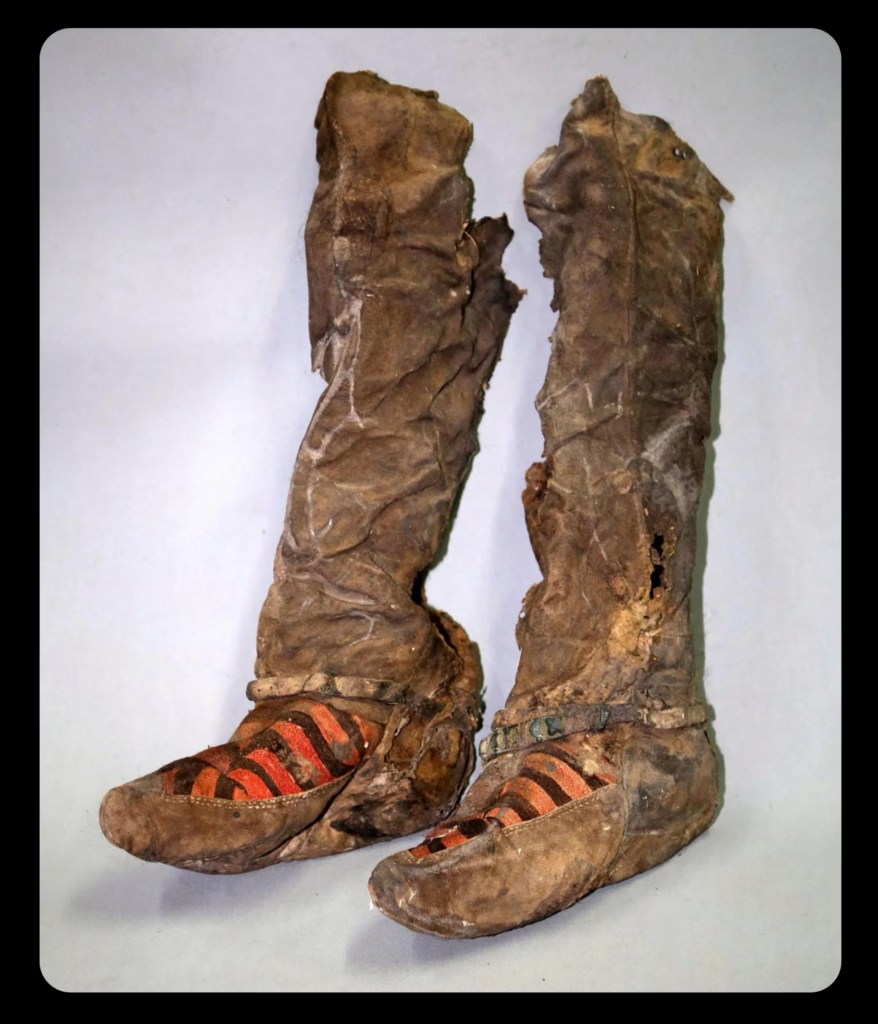
A Window into the Past
“This discovery doesn’t just show us how these people lived—it tells us what they valued,” said one of the lead archaeologists on the project. “We see a culture that was mobile but refined, practical yet deeply symbolic.”
Further studies are underway to decode the origins of the artifacts, trace trade routes, and learn more about the woman’s place within her society. As scientific analysis progresses, the Altai mummy may prove to be one of the most significant archaeological finds in the region in recent years.
This discovery redefines what we know about the endurance and complexity of ancient nomadic civilizations—showing that life in the harsh mountain environment was not only sustainable, but richly layered with cultural meaning.
All images in this article come from various sources.
